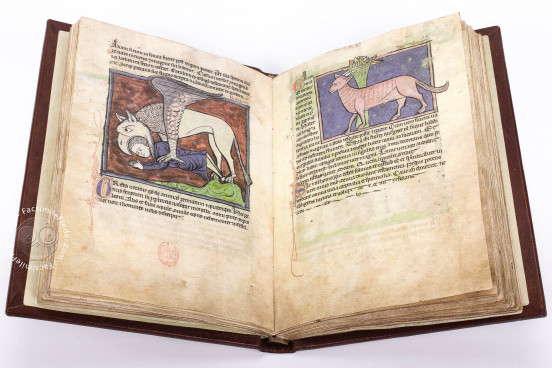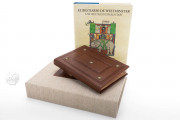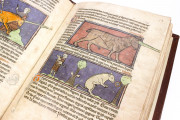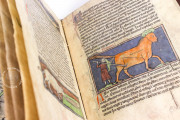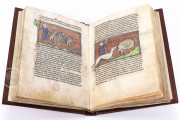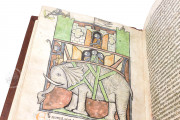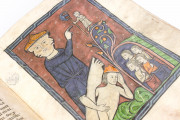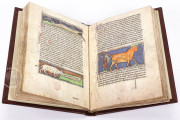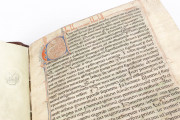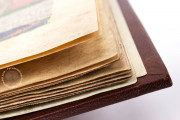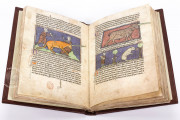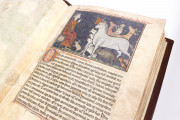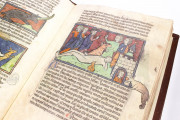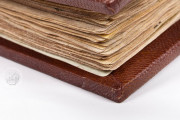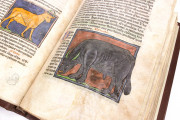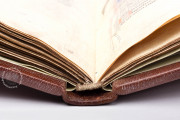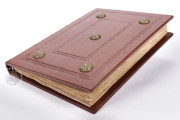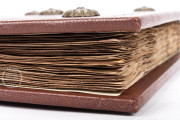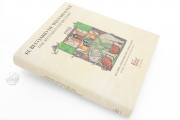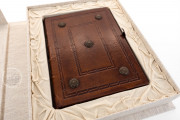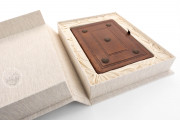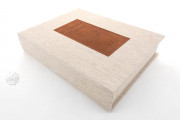The large miniatures, rich detail, and superb script make the Westminster Abbey Bestiary a glorious example of the English bestiary manuscript type. The various creatures fill and at times overflow their colorful frames set within long lines of expertly written and ornamented Gothic textura. It also contains some additional pieces such as “Adam naming the animals” and “Rota Fortunae”. The descriptions of each creature not only bring to mind their appearance and natures, but also provide moralizing context for their roles in the Christian world.
Created in York, England in the late thirteenth century, this bestiary contains 164 miniatures of the animals described in the Latin text. Familiar creatures such as cattle and sheep and exotic animals such as elephants and panthers give way to fantastic creatures such as dragons and manticores. The delightful personalities instilled in each illustration brings to life the surrounding descriptive text. The Westminster Abbey bestiary’s imaginative and detailed renderings of the medieval natural world make it a most marvelous English gothic manuscript.
The Pinnacle of English Bestiaries
Among bestiaries created in England in the twelfth and thirteenth centuries, that at Westminster Abbey is the most spectacular with its large and detailed illustrations. It features over 160 miniatures, all of which are brightly colored and detailed on starred backgrounds of pink, red and blue.
Classic Gothic pen-flourished Puzzle initials mark the beginning of certain sections and descriptions. The illuminations are in excellent condition allowing the character and personality of the various creatures to enchant and amuse after eight centuries.
A Compilation of Animal Lore
The hundreds of creatures are grouped according to their type, such as quadrupeds, birds, fish, and serpents. A distinction is made between domesticated animals and wild beasts.
Each has a physical description as well as an account of the animal’s behavior, not only amongst its own kind but with other species and humans. Often the descriptions are presented within a moralizing tale concerning the nature of the beast within the Christian worldview, but the underlying objective knowledge was important as well.
A Rare Type of Bestiary
The medieval bestiary developed from the ancient Greek text Physiologus. Four different families of bestiaries are defined by additions and modifications to the core text from Isidore of Seville, Ambrose, and Rabinus Maurus among others.
This bestiary belongs to the third family that appears in the thirteenth century. It alters the ordering of the animals, beginning with domesticated livestock. Only five examples are known from this family, the Westminster Bestiary being the most magnificent.
We have 1 facsimile edition of the manuscript "Westminster Abbey Bestiary": Bestiario de Westminster facsimile edition, published by Siloé, arte y bibliofilia, 2013
Request Info / Price
